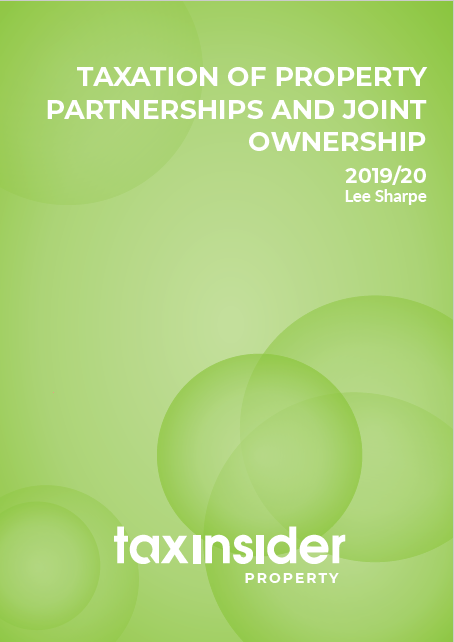This is an extract from our report Taxation Of Property Partnerships and Joint Ownership.
Broadly speaking, a joint enterprise can involve numerous benefits, such as:
- Scalable investment / finance – the more investors who can join an enterprise, the larger or more valuable the property portfolio can be. Alternatively, having more investors means that each investor can reduce their personal investment exposure to an acceptable level of risk.
- Economies of scale – it should be possible to apply a cost-effective business model with decreasing marginal cost for additional properties; savings may also be made in the context of access to finance and to professional fees.
- Expertise – a business partner or joint investor with many years’ experience in, say, student letting, may significantly improve the business’ performance in that sector, to the benefit of all joint investors.
- Unsurprisingly, this report will focus on the tax implications of ‘lightening the tax load’.
- Reduction in tax cost – last but by no means least, is that better use may be made of people’s tax allowances and lower tax rate bands, if income is spread from one taxpayer to several. Of course, this is relevant mostly in the context of joint investment between close friends and family members, as per the following example:
Example 1: William And Kate
William and Kate, who are married to each other, each have their own profitable trading business and pay income tax at the higher rate of 40%. Kate is about to have their first baby and decides to put her business ‘on hold’ for a year. William thinks they should invest in a buy-to-let property which will yield £10,000 a year in net income after letting expenses.
If he invests on his own, William will pay £4,000 in tax and receive net only £6,000.
William on his own:
£10,000 @ 40% = £4,000 tax, i.e. £6,000 net income
If he and Kate invest jointly, then they will be taxed on £5,000 net rental profits each. William will again pay tax at 40% so he will pay £2,000 in tax and receive £3,000, net of tax.
But assuming Kate has no other income while her business is on hold, her tax-free personal allowance (£12,500 in 2019/20) will more than cover her half-share of the rental profits, so she will pay no tax and gets to keep all of her rental profit.
This means that investing together will net them £2,000 in tax savings:
William Kate Total
Income £5,000 £5,000 £10,000
Rate 40% 0%
Tax £2,000 £0 £2,000
Net £3,000 £5,000 £8,000
As a couple, they have £8,000 net or £2,000 more than if William were to invest on his own.
Clearly, where one spouse pays tax at a higher rate than the other, putting income into the hands of the lower-paying spouse will benefit the couple overall.
Of course, if Kate were to invest on her own, then she would receive the full £10,000 net rental profit and utilise most of her £12,500 personal allowance, leaving no taxable income at all:
Kate £
Income 10,000
Personal Allowance (10,000)*
Taxable £0
Rate 20%
Tax £0
Net income £10,000
*Restricted to no more than chargeable income
Although an equal joint investment is significantly better than William ‘going it alone’, having Kate as sole investor reduces the tax bill to Nil, saving a further £2,000 in tax.
So, whoever, within a couple, owns the income-generating property, and therefore receives the income, has a potentially very significant effect on the tax that is due.
How net incomes may be distributed between spouses, etc., from one year to the next is also important: if, having enjoyed 100% of the income in Year 1, Kate returns to work in the following year as a solicitor earning £95,000 annually, then she would rather not risk losing her tax-free Personal Allowance (as the additional rental income would take her over £100,000 of adjusted net income, such that her Personal Allowance would start to be ‘tapered off’ at a rate of 50%, in accordance with ITA 2007 s 35 (2)). As a couple, Kate and William would probably prefer then to re-allocate the net rental income at least 50% in William’s favour.
There are special tax rules for dealing with the allocation of income between spouses and civil partners, as we shall see later. We shall look at how incomes are allocated – and potentially re-allocated – amongst spouses, partners and joint owners more generally.




